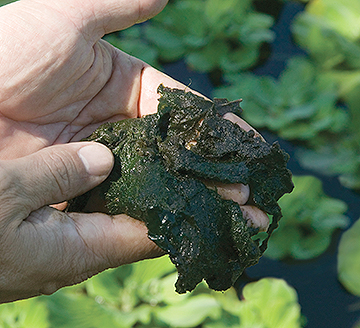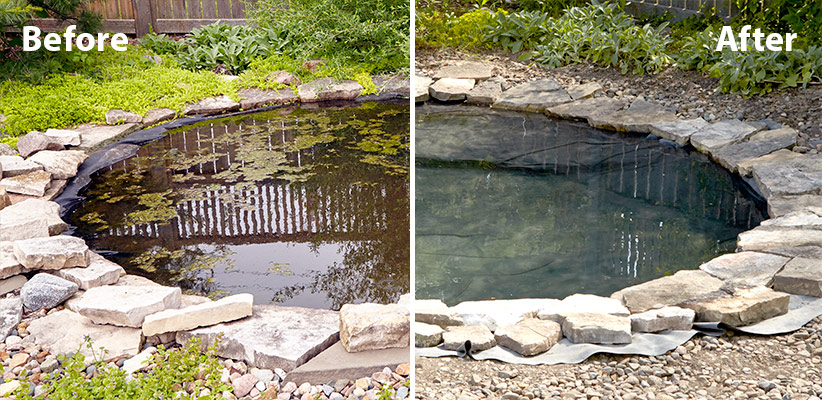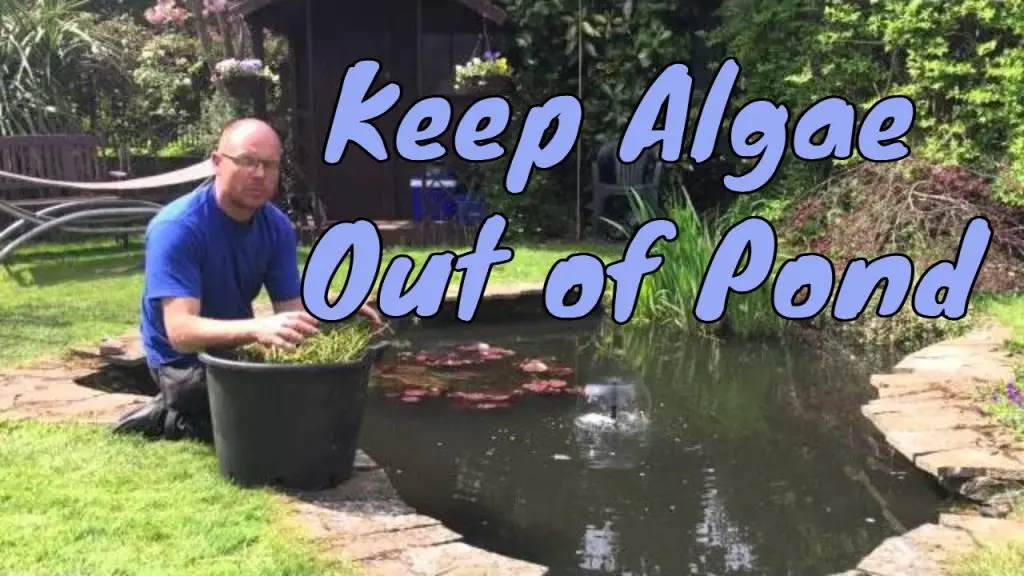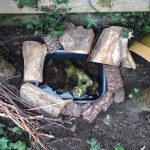Algae growth can be a common issue in ponds, turning the water green and affecting the overall health of the pond ecosystem. If left unchecked, algae can quickly take over a pond, leading to poor water quality and potentially harming aquatic life. Fortunately, there are several effective methods to control and prevent algae growth in ponds. In this article, we will discuss some practical strategies to help you stop algae in your pond and maintain a healthy aquatic environment.

Credit: www.tetra-fish.com
Understanding Algae
Before we dive into how to stop algae in a pond, it’s essential to understand what algae is and why it grows in ponds. Algae are simple, plant-like organisms that thrive in water environments rich in nutrients and sunlight. In ponds, algae growth is often fueled by an excess of nutrients, such as nitrogen and phosphorus, which can come from various sources like fish waste, decaying organic matter, and runoff from fertilizers.
Effective Ways to Stop Algae in a Pond
1. Proper Filtration: Installing a quality filtration system in your pond is crucial for removing excess nutrients and debris that promote algae growth. Consider using a combination of mechanical and biological filtration to keep the water clean and clear.
2. Aeration: Proper aeration can help maintain oxygen levels in the water, which is essential for promoting the growth of beneficial bacteria that can outcompete algae. Aeration also helps prevent stratification and nutrient buildup at the bottom of the pond.
3. Shade: Providing natural shade over your pond can help reduce sunlight exposure, which is essential for algae growth. You can plant trees or install shade sails to create shaded areas in and around the pond.
4. Balance Fish Population: Overstocking your pond with fish can lead to excess nutrients from fish waste, contributing to algae growth. Maintain a balanced fish population to help control nutrient levels in the water.
5. Regular Maintenance: Performing routine pond maintenance, such as removing debris, trimming plants, and cleaning filters, can help prevent the buildup of nutrients that fuel algae growth. Regular water testing can also help you monitor nutrient levels and make necessary adjustments.
Natural Methods to Control Algae
1. Barley Straw: Barley straw is a natural and effective way to control algae in ponds. When barley straw decomposes in water, it releases compounds that inhibit algae growth. Place barley straw bundles in your pond to help prevent algae outbreaks.
2. Beneficial Bacteria: Adding beneficial bacteria supplements to your pond can help break down organic matter, reducing nutrient levels and depriving algae of their food source. These bacteria can help establish a healthy microbial balance in the water.
3. Aquatic Plants: Adding aquatic plants to your pond can help absorb excess nutrients and compete with algae for resources. Plants like water lilies, water hyacinth, and duckweed can help shade the water and reduce nutrient levels, limiting algae growth.

Credit: www.gardengatemagazine.com
Chemical Treatments for Algae Control
While natural methods are preferred for controlling algae in ponds, there are times when chemical treatments may be necessary, especially in severe cases of algae overgrowth. When using chemical treatments, it is essential to follow the manufacturer’s instructions carefully and consider the impact on other aquatic life in the pond.
1. Algaecides: Algaecides are chemicals designed to kill algae in ponds. While effective, algaecides can also harm beneficial aquatic plants and fish if not used correctly. Use algaecides sparingly and as a last resort for severe algae problems.
2. Copper Sulfate: Copper sulfate is a common treatment for controlling algae in ponds. It is effective at killing algae but can be toxic to fish and other aquatic organisms at high concentrations. Use copper sulfate cautiously and consider alternative methods first.
Preventing Algae Growth in the Future
Once you have successfully controlled algae in your pond, it’s essential to take preventive measures to avoid future outbreaks. Regular maintenance, proper filtration, and monitoring nutrient levels are key to preventing algae growth in the long term. By implementing these strategies and staying proactive, you can enjoy a clear and healthy pond all year round.
Conclusion
Algae growth in ponds can be a common and frustrating issue for pond owners, but with the right strategies and preventive measures, it can be effectively controlled and minimized. By understanding the causes of algae growth, implementing proper filtration, aeration, and natural control methods, and taking preventive actions, you can stop algae in your pond and maintain a balanced and healthy aquatic ecosystem. Remember to monitor your pond regularly, stay proactive in maintenance, and enjoy the beauty of a clear and algae-free pond.





